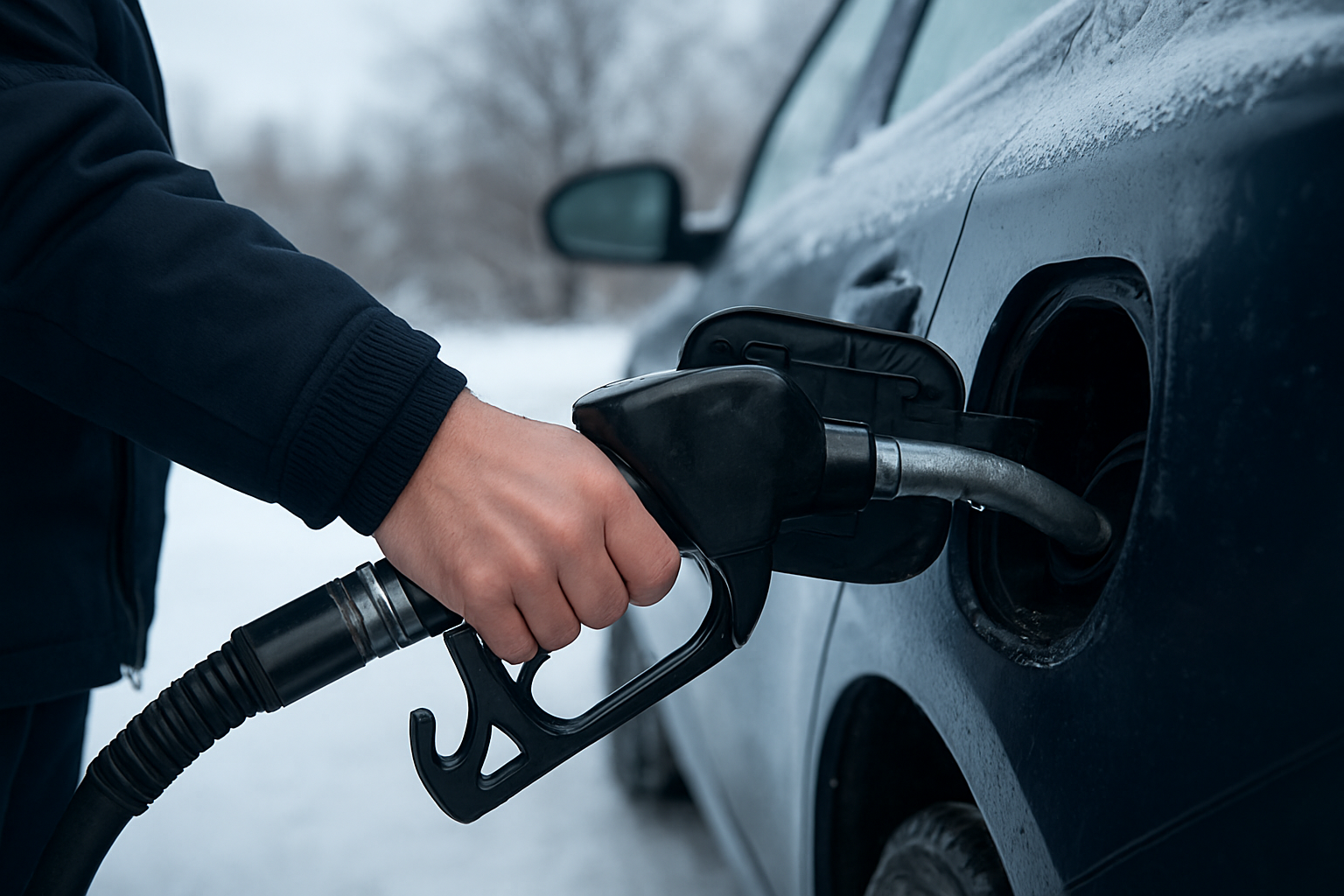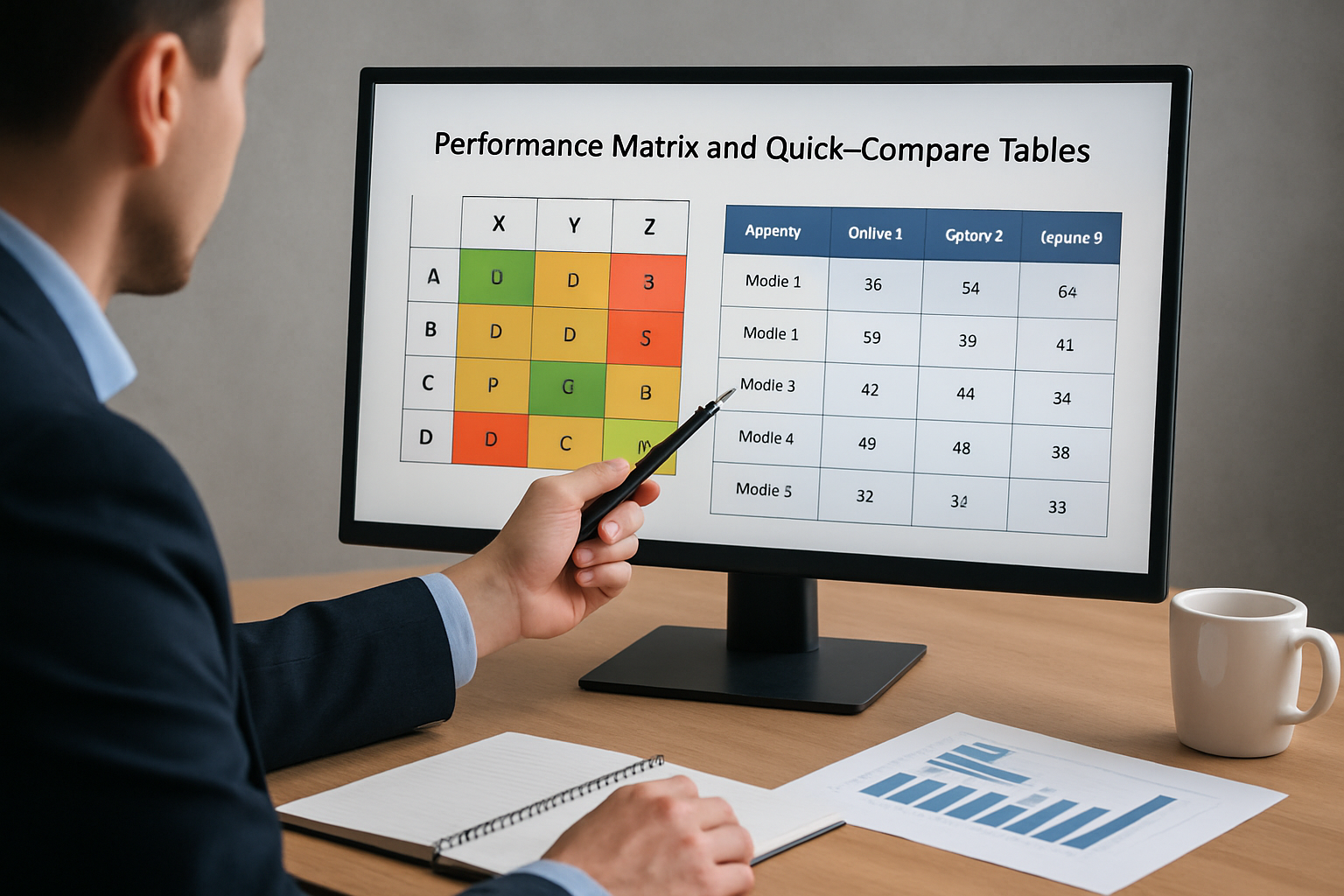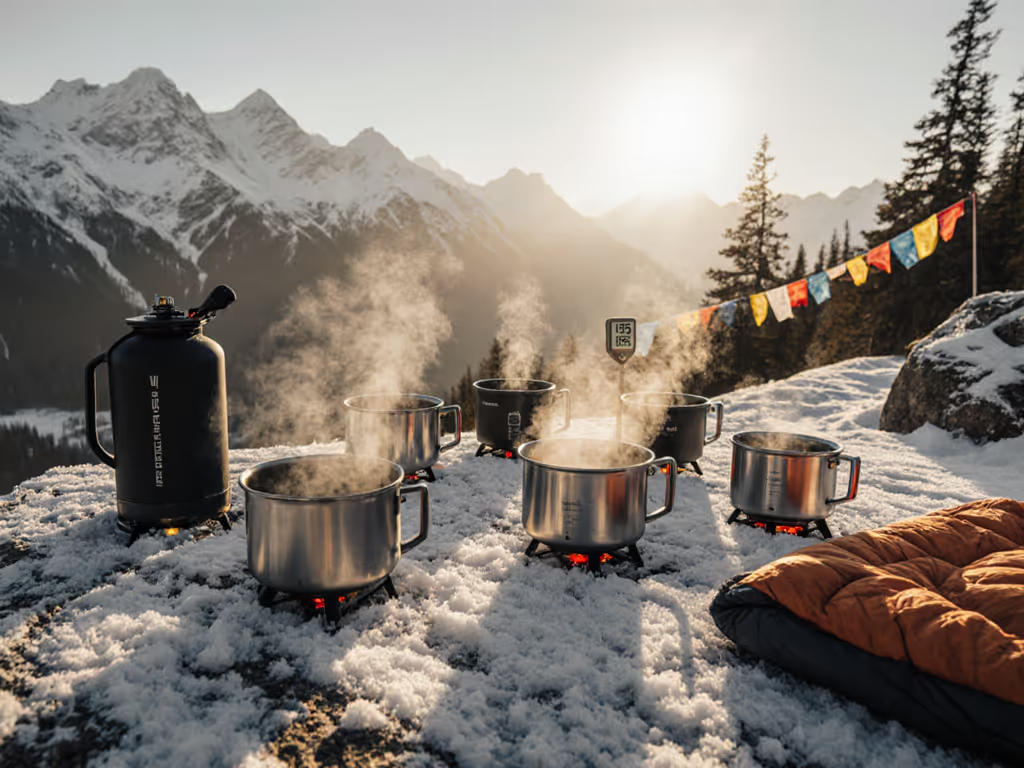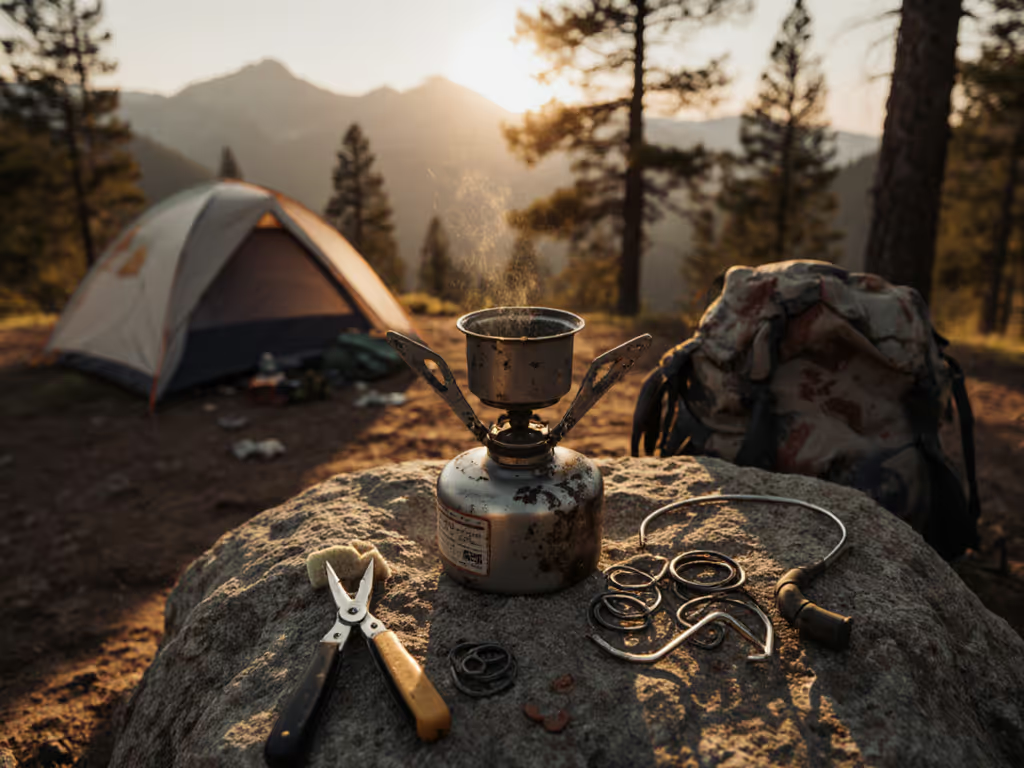Nov 9, 2025 Heatinerary Trip-Tuned Stove Lab: 9 Stove, Fuel & Cookware Combos for Cold-Weather Backpacking
Nov 9, 2025 Heatinerary Trip-Tuned Stove Lab: 9 Stove, Fuel & Cookware Combos for Cold-Weather Backpacking
Winter cooking can be the difference between a legendary trip and a long, cold night, which is why this blog post for 2025-11-09 dives into nine proven stove, fuel, and cookware combinations tuned for frigid conditions. At Heatinerary, we test and analyze how systems behave when temperatures plunge, winds build, and elevation climbs. Instead of relying on guesswork or generic advice, our Trip-Tuned Stove Lab applies standardized lab and field testing to produce condition‑based guides and embedded calculators that show how route, season, and weather affect the best setup. For trip‑specific recommendations we provide route‑aware planning help by email (send basic trip details and expect a reply in 1–2 business days).
Because conditions vary so widely, we pair data with real-world context. A stove that shines at the trailhead can stall at a high pass, and a pot that sips fuel on calm nights might underperform in a gusty basin. We will walk through fuel science, system selection, and the nine combos our testers and readers return to year after year. Along the way, you will find quick-compare tables, pragmatic tips, and expert insights designed to help you cook efficiently and safely, whether you pack solo or lead a family group.
Why This blog post for 2025-11-09 Matters for Winter Cooking
Cold weather exposes every weakness in a stove system, from canister pressure and preheat loop design to pot shape and windscreen choice. When you are hungry and visibility drops, you cannot wait for lukewarm simmer. You need predictability. This blog post for 2025-11-09 tackles the exact problem many campers face: not knowing which configuration truly works for their route and conditions. Heatinerary’s mission is to replace uncertainty with precise guidance backed by lab measurements and field notes.
In our testing, wind can increase fuel use by 30 to 50 percent even with a good windscreen, and water near freezing can double boil times compared to milder evenings. At altitude, lower air pressure changes flame behavior and encourages heat loss. These compounding factors are why a system approach beats one-off purchases. Our comprehensive camping stove reviews and guides, plus this focused winter analysis, show how burners, fuels, and pots interact. If you have ever wondered why two similar stoves perform differently in the same cold, this is your blueprint.
- Route and elevation change heat transfer; expect longer melt and boil times above 2,400 meters.
- Wind screening and pot geometry often save more fuel than chasing raw output measured in BTU (British Thermal Unit).
- Fuel blends matter; the wrong canister can stall below freezing even when the stove is technically “winter rated.”
- For family trips, wide pots and stable platforms beat ultralight minimalism when safety and hot meals matter most.
Your blog post for 2025-11-09 Guide to the Trip-Tuned Stove Lab
Heatinerary’s Trip-Tuned Stove Lab aligns real trip variables with a matched system, removing the guesswork. Our Lab defines the testing protocols and publishes condition‑based picks and calculators; we do not operate an automated recommendation engine that ingests full trip profiles on the site. For individualized, route‑aware stove and fuel advice, email us your trip basics (route, elevation profile, expected temperatures, group size, cook style, and resupply options) and we’ll reply, typically within 1–2 business days. The Lab’s published outputs inform those recommendations and the guidance we provide.
Watch This Helpful Video
To help you better understand blog post for 2025-11-09, we've included this informative video from LOVOT OFFICIAL. It provides valuable insights and visual demonstrations that complement the written content.
How do we get there? We test stoves and pots in controlled wind and temperature, then repeat on trail to validate results. We measure one liter boils with water near freezing, track fuel consumption per liter, and evaluate simmer stability for real cooking. The published outputs are ranked shortlists and notes - phrases like “best with inverted canister” or “pair with heat exchanger pot for subzero efficiency” - that appear in our guides and calculators. For families, we fold in stability, ease of priming, and glove friendliness, so the kitchen remains safe and stress-free. Personalized advice based on your trip details is available via email.
- Considered inputs (in published guides and when you request email planning): route and altitude, forecast lows and wind, group size, meal style, fuel availability, and leave-no-trace constraints.
- Typical published outputs and email advice: recommended stove types, fuel choices, cookware dimensions, wind management, and safety considerations.
- Validation: lab benchmarks meet trail results, so your system works at 5 in the morning when everyone needs hot water fast.
Fuel Behavior in the Cold: What Actually Changes

Winter cooking is a thermodynamics story. Canister fuels rely on vapor pressure to feed the burner; as the temperature drops, pressure falls and flame strength declines. Propane maintains higher pressure in the cold than isobutane, which in turn outperforms normal butane. See our lab-verified propane vs butane vs white gas comparison for temperature thresholds and blend tips. White gas is pumped to create pressure, so it remains reliable far below freezing, though it demands priming and careful handling. Understanding these differences is how you decide whether an integrated canister system is enough or a liquid fuel workhorse is wiser.
Below are cold-focused characteristics you will see referenced throughout this blog post for 2025-11-09. They explain why certain combos dominate at specific temperatures and group sizes. Remember that windscreens, heat exchanger pots, and cozy use can shift practical thresholds by several degrees. In our Lab, pairing the right pot with the right burner reduced fuel use by 15 to 25 percent across multiple winter scenarios.
| Fuel Type | Boiling Point (degrees Celsius) | Cold-Weather Reliability | Best Use Notes |
|---|
| Propane | -42 | Excellent in deep cold with proper canisters and regulators | Great for remote canister stoves with inverted feed; heavier canisters |
| Isobutane | -12 | Good to moderately cold when blended with propane | Integrated systems shine with isobutane-propane blends near freezing |
| Normal Butane | -0.5 | Poor below freezing | Avoid for winter; reserve for warm-weather trips |
| White Gas | N/A | Excellent; pressure created by pumping | Reliable at very low temperatures; great for melting snow for groups |
| Alcohol | Varies by blend | Fair to poor in deep cold | Works above freezing; needs insulation and patience |
| Solid Fuel Tablets | N/A | Fair as backup | Emergency or simple meals; slower boils in wind and cold |
9 Trip-Tuned Stove, Fuel and Cookware Combos for Cold-Weather Backpacking
These nine combinations come from Heatinerary’s winter testing and reader feedback. We selected them because they span solo speed to family comfort, with clear guidance on when each shines. Throughout this blog post for 2025-11-09, you will see how each combo ties to temperature bands, group sizes, and cooking goals so you can match your conditions quickly.
1) Integrated Canister System + Heat Exchanger Pot for Shoulder-Season Cold
- Ideal conditions: 15 to 40 degrees Fahrenheit with light wind and sheltered camps.
- Fuel: Isobutane-propane blend canister for stable pressure; keep canister warm in a pocket before use.
- Why it works: The heat exchanger pot reduces losses, producing efficient boils for coffee, freeze-dried meals, and quick soups.
- Watch-outs: Below about 15 degrees Fahrenheit, output may sag; consider a remote canister or switch to liquid fuel.
2) Remote Canister with Inverted Feed + Heat Exchanger Pot for Freezing Nights
- Ideal conditions: 0 to 25 degrees Fahrenheit with moderate wind when you can use a proper windscreen.
- Fuel: Propane-forward canisters excel; running inverted feeds liquid fuel through a preheat loop for robust flames.
- Why it works: Stable platform, wind-friendly, and safer distance from the canister in a windscreen.
- Watch-outs: Learn safe inversion technique and always ventilate your cooking area to avoid carbon monoxide.
3) Remote Canister with Preheat Loop + Wide Pot for Real Cooking
- Ideal conditions: 10 to 35 degrees Fahrenheit for simmering pasta, sautéing, and one-pot meals.
- Fuel: Isobutane-propane blend; keep canister warm and use a reflective base for stability and insulation.
- Why it works: Wide pots spread heat, the preheat loop improves cold performance, and simmer control keeps food from scorching.
- Watch-outs: Slightly heavier than integrated systems; bring a lid and an insulated cozy to save fuel.
4) White Gas Workhorse + 1.5 to 2 Liter Pot for Snow Melting
- Ideal conditions: -20 to 20 degrees Fahrenheit, especially when melting snow is mandatory.
- Fuel: White gas remains dependable in severe cold, with pressure created by pumping the bottle.
- Why it works: High output, consistent performance, and easy refueling for groups of three or more.
- Watch-outs: Requires priming and regular maintenance; practice at home to avoid flares and frustration.
5) Multi-Fuel Expedition Stove + Metal Windscreen for Remote Routes
- Ideal conditions: Below -10 degrees Fahrenheit or international routes with limited fuel options.
- Fuel: Burns white gas, kerosene, or unleaded; flexibility ensures you can cook regardless of resupply.
- Why it works: Expedition stoves are built for reliability and power in hostile environments.
- Watch-outs: Heavier and noisier; prioritize a stable base and a wide pot to translate power into efficient cooking.
6) Dual-Fuel Multi-Fuel Stove + Heat Exchanger Pot for Versatility
- Ideal conditions: Trips crossing temperature bands and elevations with uncertain forecasts.
- Fuel: Start with canister in milder sections, switch to white gas when cold intensifies.
- Why it works: One burner supports two fuels, keeping your kitchen consistent while conditions change.
- Watch-outs: Know the conversion steps and test both modes before departure.
7) Alcohol Stove Winter Kit + Tight Wind Management for Simple Meals
- Ideal conditions: Above 25 degrees Fahrenheit and low wind for ultralight hikers prioritizing simplicity.
- Fuel: Alcohol performs best when the stove sits on an insulated base with a careful windscreen.
- Why it works: No moving parts and low weight for quick boils of small volumes.
- Watch-outs: Slow and sensitive to wind; not suited for melting snow or cooking for groups.
8) Solid Fuel Tablet Kit + Compact Pot as Emergency Backup
- Ideal conditions: Emergency or backup heat when primary fuel runs out or fails.
- Fuel: Solid fuel tablets store forever, light reliably, and add redundancy to any kit.
- Why it works: A small, flat burner and foil windscreen can produce hot drinks when morale matters.
- Watch-outs: Odor and slower boils; plan for minimal meals and bring a lighter that works in cold.
9) Wood-Gas Stove + Canister Backup for Treeline Camps
- Ideal conditions: Forested routes above freezing where wood is abundant and regulations allow flame use.
- Fuel: Small sticks and twigs; carry a small canister stove as a fail-safe for wet wood or bans.
- Why it works: Conserves carried fuel and creates powerful heat with practice.
- Watch-outs: Not for high wind or alpine zones; check restrictions and keep smoke management in mind.
Performance Matrix and Quick-Compare Tables

This comparative view condenses our Lab and field results into one glance. Metrics reflect one liter of near-freezing water, 20 degrees Fahrenheit ambient, and a steady 5 miles per hour (mph) breeze in a semi-sheltered setup. Your results will vary with wind exposure, pot choice, and technique, but this matrix will steer you toward the best starting point for your trip plan and complements every recommendation in this blog post for 2025-11-09.
| Combo | Stove Type | Fuel | Best Temp Range (degrees Fahrenheit) | 1 L Boil Time (minutes) | Fuel Use (grams per liter) | System Weight (grams) | Best For |
|---|
| 1 | Integrated canister | Isobutane-propane | 15 to 40 | 6.0 | 18 to 22 | 550 to 650 | Solo or duo speed |
| 2 | Remote canister inverted | Propane-forward blend | 0 to 25 | 5.5 | 17 to 20 | 550 to 700 | Reliable freezing performance |
| 3 | Remote canister preheat loop | Isobutane-propane | 10 to 35 | 5.8 | 20 to 24 | 650 to 800 | Simmer and real cooking |
| 4 | White gas | White gas | -20 to 20 | 4.8 | 22 to 26 | 800 to 1000 | Snow melting, groups |
| 5 | Multi-fuel expedition | White gas or kerosene | -30 to 15 | 5.0 | 23 to 27 | 900 to 1100 | Remote routes, reliability |
| 6 | Multi-fuel dual-mode | Canister and white gas | -15 to 35 | 5.2 | 20 to 25 | 750 to 950 | Variable forecasts |
| 7 | Alcohol kit | Alcohol | 25 to 45 | 10.5 | 45 to 55 | 150 to 250 | Ultralight simplicity |
| 8 | Solid fuel | Solid tablets | Emergency | 12.0 | One tablet per cup | 100 to 200 | Backup heat |
| 9 | Wood-gas + backup | Wood and canister | 30 to 50 | 7.5 | Wood fuel | 400 to 600 | Treeline camps |
Notes: Times and consumption reflect Heatinerary Trip-Tuned Stove Lab protocols and validation trips. Expect faster boils with fully sheltered kitchens and slower performance in exposed saddles. A tight-fitting lid, a real windscreen, and a heat exchanger pot consistently improved efficiency across all canister systems in our testing.
Field Notes, Tips and Safety for Real-World Trips
Case study one, solo shoulder season: A hiker using an integrated system with a heat exchanger pot at 28 degrees Fahrenheit boiled six liters over a weekend and returned with roughly 25 grams of fuel left in a 110-gram canister. Wind management and a reflective base made the difference. Case study two, three-person high-country trip: At 9,000 meters elevation equivalent in a cold-soak chamber, a white gas workhorse and 1.8 liter pot melted snow for drinking and cooking with dependable flames at -10 degrees Fahrenheit. For more on thin-air performance above 10,000 feet, read our high-elevation stove reliability tests. The group averaged 75 to 90 milliliters of white gas per person per day, cooking breakfast and dinner.
Families, especially with young campers, often benefit from the remote canister with inverted feed or a white gas stove paired with a wide, stable pot. When multiple cups of hot chocolate are non-negotiable, stability and output reduce stress. This blog post for 2025-11-09 also emphasizes safety: ventilate shelters to prevent carbon monoxide buildup, handle liquid fuels away from tents, and secure stoves on firm, insulated bases to avoid melting into snow mid-boil. Get essential precautions in our camp stove carbon monoxide safety guide. Practice priming and inversion at home so nothing is “new” on the first subfreezing night.
- Warm your canister in a jacket pocket and start with a modest flame before ramping up.
- Use a real windscreen with remote canister and liquid fuel stoves; never enclose an on-canister stove.
- Insulate the stove base with a firm, heat-proof pad; avoid sinking or slushy snow under the burner.
- Match pot size to the group: 0.9 to 1.2 liters for solo, 1.5 to 2.0 liters for small groups, wider shapes for cooking.
- Adopt a cozy: finishing pasta or rice off-flame saves fuel and reduces scorching.
- Carry a backup ignition method and a compact solid fuel tab for emergencies.
Finally, the brand layer: examples such as MSR (Mountain Safety Research) white gas stoves and integrated systems from multiple manufacturers demonstrate the principles here, but the science matters more than the logo. Heatinerary’s comparison of stove fuels for subzero performance, plus expert insights on family and backpacking options, ensures you choose on performance, not hype. Heatinerary is a testing and advice publisher - we do not sell gear directly on the site; some reviews and guides include affiliate links to retailers. Treat this blog post for 2025-11-09 as your quick reference, then contact us via email for route‑aware advice informed by the Trip‑Tuned Stove Lab.
Conclusion
Power through winter with nine proven stove, fuel, and cookware combinations matched to your route, weather, and goals.
Imagine never second-guessing your kitchen: the right burner ignites, the pot sips fuel, and hot meals arrive on schedule even in driving snow. In the next 12 months, your winter trips can feel warmer, safer, and more delicious with a system specifically tuned to you.
Which combo will anchor your next cold camp, and how will you adapt the ideas in this blog post for 2025-11-09 to the places you love most?
Power Your Winter Kitchen with Heatinerary
Heatinerary’s Trip-Tuned Stove Lab produces published, condition‑based picks, embedded calculators, and route-aware email planning help to deliver tailored stove, fuel, and cookware advice by route, season, and weather. We do not sell gear directly on the site; for individualized recommendations, email us your trip basics and expect a reply in 1–2 business days.
Request Email Planning Help








